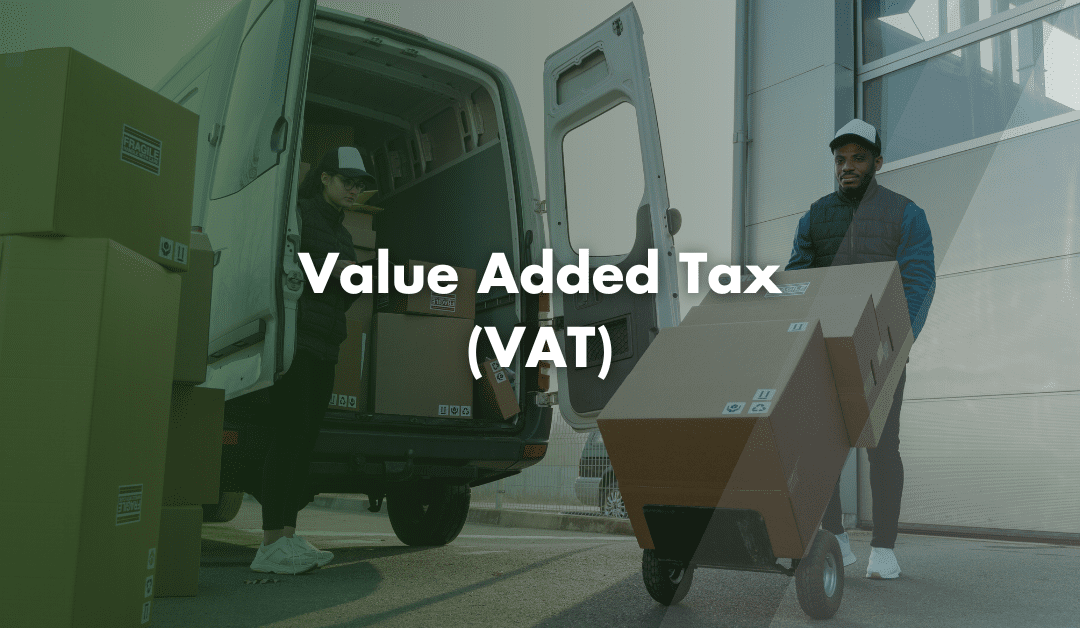VAT, or Value Added Tax, is a consumption tax that businesses charge on most goods and services. Businesses collect the tax on behalf of the government by adding it to the price of their products and services.
Customers pay this tax and businesses pass it onto HMRC. The tax applies to most transactions, including:
- Sales
- Commissions
- Business asset sales
- Some business perks, such as staff canteen meals or company gifts
Do You Need to Register for VAT?
A business must register for VAT if its taxable turnover exceeds £90,000 within a rolling 12-month period. If your turnover is below this threshold, you can choose to register voluntarily. Voluntary registration allows businesses to reclaim the tax on purchases.
You have the option to cancel your registration if your taxable turnover falls below £88,000. If you expect to exceed the threshold in the next 30 days, you must register immediately to avoid penalties.
How Much VAT Do You Charge?
Businesses charge VAT at different rates depending on the goods or services they are selling:
- Standard Rate (20%) – Most goods and services fall under the category
- Reduced Rate (5%) – This applies to specific items, such as home energy or children’s car seats
- Zero Rate (0%) – Essential goods like food and children’s clothing are zero-rate
Some items, like financial services and insurance, are exempt altogether. If a business sells VAT-exempt goods or services, it cannot register or reclaim tax on business expenses.
How to Register
You can apply online through the Government Gateway. To complete the registration, you will need:
- Business details, including turnover
- Company registration number (if applicable)
- National Insurance number (for sole traders and partnerships)
- Business bank account details
- A Unique Taxpayer Reference (UTR) if available
Once registered, you receive a 9-digiit VAT number, which must appear on invoices. You will also receive details on your VAT accounting period and how to submit your first VAT return.
How to Charge
When selling a product or service, businesses must include VAT in the price. Here’s how to calculate it:
- For 20% – Multiply the price by 1.2
- For 5% – Multiply the price by 1.05
- For 0% – The price remains unchanged
For example: If an items costs £50 and you need to add 20% tax, the total price will be £60. Businesses must clearly display VAT on invoices, either as a separate charge or as part of the total price.
What is VAT Return?
A VAT return is a report that businesses submit to HMRC, usually every 3 months. It details:
- Tax charged on sales (Output)
- Tax paid on purchases (Input)
If Output is higher than Input , you pay the difference to HMRC. If Input is higher, HMRC will refund the difference.
Businesses must file VAT returns digitally using Making Tax Digital (MTD) software, ensuring all records are stored electronically.
How to Submit Your VAT Return
VAT-registered businesses must use MTD-compliant software, such as QuickBooks or Xero, to submit returns. Returns are usually due 1 month and 7 days after the end of each VAT period.
Failure to submit returns or pay on time can result in penalties and interest charges.
What Happens if You Make a Mistake on Your Return?
If you realise you have made an error on a VAT return, you can usually correct it in your next return if the mistake is under £10,000. For larger errors, you must notify HMRC separately. Deliberate errors can lead to penalties.
Can You Claim VAT Back?
Businesses can reclaim VAT on purchases made for business use. This includes:
- Equipment and materials
- Business travel and accommodation
- Stock and inventory
- Professional services, such as accountants and consultants
To successfully reclaim, businesses must keep record of invoices and receipts.
Are Some Businesses Exempt?
Yes.
Businesses that only sell VAT-exempt goods or services, such as insurance or education, do not need to register. Some businesses may qualify for partial exemption, where only some sales are subject to tax.
If the majority of your sales are zero-rate, you can apply for an exemption from VAT registration to avoid the burden of filing returns.
VAT Schemes for Easier Reporting
Flat Rate Scheme – Small businesses pay a fixed percentage of their turnover instead of calculating tax on every sale and purchase.
Cash Accounting Scheme – Tax is paid only when customers make payments, rather than when invoices are issued.
Annual Accounting Scheme – Instead of quarterly returns, businesses submit one return per year, requiring them to make advance payments based on estimated turnover.
Contact Us
We are not just accountants; we are Chartered Accountants with one of the most reputable and premium accounting bodies. We are registered and regulated by ACCA; so you can rest assured that you are in good hands. Knowing this, don’t hesitate to get in touch with us if you require assistance: Pi Accountancy | Contact Us

